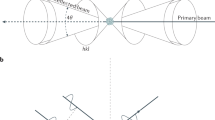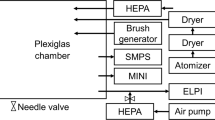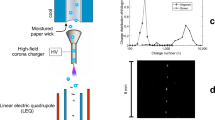Abstract
IT may sometimes be an advantage to analyse chemically single dust particles occurring with many others of different composition. Minor constituent particles would then be revealed undiluted by the others, and individual variations not obscured. For similar reasons such an analysis might also find other applications in chemical and biological fields.
This is a preview of subscription content, access via your institution
Access options
Subscribe to this journal
Receive 51 print issues and online access
$199.00 per year
only $3.90 per issue
Buy this article
- Purchase on Springer Link
- Instant access to full article PDF
Prices may be subject to local taxes which are calculated during checkout
Similar content being viewed by others
References
Seely, B. K., Analyt. Chem., 27, 93 (1955).
Cadle, R. D., Rubin, S., Glassbrook, C. I., and Magill, P. L., Arch. Ind. Hyg. and Occup. Med., 2, 698 (1950).
Monkman, J. L., Analyt. Chem., 27, 704 (1955).
Turner, B. M., (a) Nature, 179, 964 (1957); (b) Mikrochim. Acta (in the press).
Green, H. L., Phil. Mag., 4, 1046 (1927).
Author information
Authors and Affiliations
Rights and permissions
About this article
Cite this article
TURNER, B. Ionophoretic and Chromatographic Analysis of Single Dust Particles. Nature 180, 1472–1473 (1957). https://doi.org/10.1038/1801472a0
Issue Date:
DOI: https://doi.org/10.1038/1801472a0
Comments
By submitting a comment you agree to abide by our Terms and Community Guidelines. If you find something abusive or that does not comply with our terms or guidelines please flag it as inappropriate.



